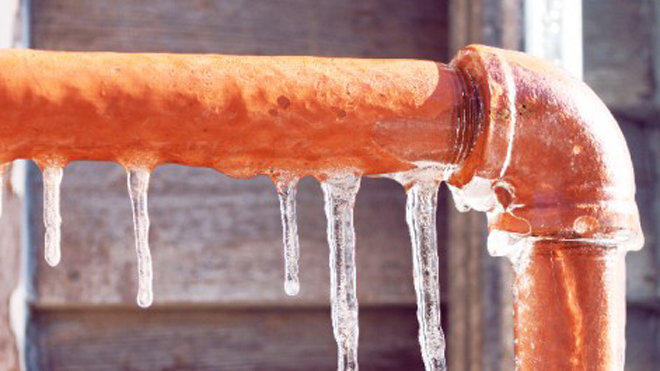How to Maintain Your Pipes from Cold Weather Damage: Crucial Tips
How to Maintain Your Pipes from Cold Weather Damage: Crucial Tips
Blog Article
What are your concepts about 6 Ways to Prevent Frozen Pipes?

Winter can damage your pipes, specifically by freezing pipes. Right here's exactly how to prevent it from occurring and what to do if it does.
Intro
As temperatures drop, the danger of frozen pipelines increases, potentially leading to expensive repair services and water damages. Understanding exactly how to stop icy pipelines is critical for home owners in cold environments.
Prevention Tips
Insulating at risk pipes
Wrap pipelines in insulation sleeves or use heat tape to protect them from freezing temperatures. Focus on pipes in unheated or external locations of the home.
Home heating strategies
Keep interior areas sufficiently heated, especially areas with plumbing. Open up closet doors to allow cozy air to distribute around pipelines under sinks.
Exactly how to recognize icy pipes
Look for reduced water circulation from faucets, uncommon odors or noises from pipes, and noticeable frost on revealed pipelines.
Long-Term Solutions
Architectural changes
Think about rerouting pipes far from outside walls or unheated areas. Include extra insulation to attics, cellars, and crawl spaces.
Updating insulation
Buy premium insulation for pipelines, attic rooms, and walls. Correct insulation assists maintain constant temperatures and lowers the risk of icy pipes.
Protecting Exterior Pipes
Garden pipes and outside faucets
Detach and drain yard hoses before wintertime. Install frost-proof faucets or cover outdoor faucets with protected caps.
Comprehending Frozen Pipes
What triggers pipes to ice up?
Pipelines ice up when exposed to temperatures below 32 ° F (0 ° C) for expanded periods. As water inside the pipes ices up, it expands, putting pressure on the pipeline walls and possibly causing them to break.
Risks and damages
Icy pipelines can cause water system disturbances, property damages, and costly repair services. Ruptured pipes can flood homes and create comprehensive structural damages.
Indicators of Frozen Pipeline
Determining frozen pipelines early can avoid them from bursting.
What to Do If Your Pipes Freeze
Immediate actions to take
If you believe frozen pipes, maintain faucets open to alleviate pressure as the ice melts. Use a hairdryer or towels soaked in warm water to thaw pipelines slowly.
Conclusion
Stopping frozen pipes calls for proactive measures and fast reactions. By understanding the reasons, signs, and preventive measures, home owners can protect their plumbing during cold weather.
5 Ways to Prevent Frozen Pipes
Drain Outdoor Faucets and Disconnect Hoses
First, close the shut-off valve that controls the flow of water in the pipe to your outdoor faucet. Then, head outside to disconnect and drain your hose and open the outdoor faucet to allow the water to completely drain out of the line. Turn off the faucet when done. Finally, head back to the shut-off valve and drain the remaining water inside the pipe into a bucket or container. Additionally, if you have a home irrigation system, you should consider hiring an expert to clear the system of water each year.
Insulate Pipes
One of the best and most cost-effective methods for preventing frozen water pipes is to wrap your pipes with insulation. This is especially important for areas in your home that aren’t exposed to heat, such as an attic. We suggest using foam sleeves, which can typically be found at your local hardware store.
Keep Heat Running at 65
Your pipes are located inside your walls, and the temperature there is much colder than the rest of the house. To prevent your pipes from freezing, The Insurance Information Institute suggests that you keep your home heated to at least 65 degrees, even when traveling. You may want to invest in smart devices that can keep an eye on the temperature in your home while you’re away.
Leave Water Dripping
Moving water — even a small trickle — can prevent ice from forming inside your pipes. When freezing temps are imminent, start a drip of water from all faucets that serve exposed pipes. Leaving a few faucets running will also help relieve pressure inside the pipes and help prevent a rupture if the water inside freezes.
Open Cupboard Doors
Warm your kitchen and bathroom pipes by opening cupboards and vanities. You should also leave your interior doors ajar to help warm air circulate evenly throughout your home.

I'm certainly very curious about Preventing and dealing with frozen pipes and I really hope you enjoyed my entry. For those who enjoyed our page please be sure to pass it around. Thank you for your time. Revisit us soon.
Call Today Report this page